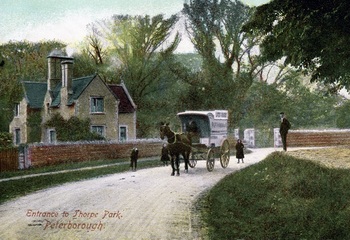
Roundheads Capture Peterborough
Information
1643: Today's the day that Parliamentarian forces attacked and captured Royalist-supporting Peterborough - quite an easy job, one feels, as the city put up no known resistance! There is a story that Oliver Cromwell banged his head as he rode through the great Norman Gate, but he would have needed a rather tall horse and to be standing in the stirrups to get his head anywhere near the top of that arch. He is, however, thought to have taken over the house in the vineyard, so it is quite probable that the gateway he hit was actually the one linking the vineyard to the graveyard. As well as the bang on Cromwell's head, the take-over resulted in the cathedral itself suffering significant damage, along with the memorial to Sir Humphrey Orme in the New Building. His grandson - also named Humphrey - took on his position in Peterborough life. The family line remained in Peterborough until the early nineteenth century but never got around to repairing or replacing the monument so damaged in the Civil War. (Tebbs, H.F., Peterborough, Oleander Press, 1979; People of Peterborough, Peterborough Museum Publications, 2009)
Taken from The Peterborough Book of Days by Brian Jones, The History Press, 2014.

































